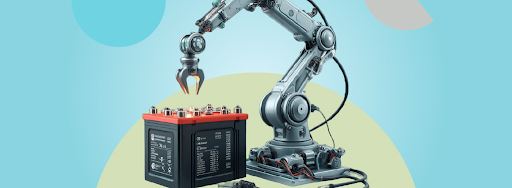Revitalizing Batteries: Advances in EV Battery Repair

One of the major challenges with electric vehicles today is the high cost and eventual replacement of lithium-ion battery packs, which can make up 30-40% of total vehicle price. As growing EV adoption accelerates battery needs, more sustainable and economical approaches to extending battery lifespan are essential.
Safely repairing degraded electric vehicle battery packs at module and cell levels will be key for affordability and sustainability. Recent innovations in damage isolation, cell refurbishing, automated re-manufacturing, and blockchain-enabled redeployment help unlock battery repair.
Here, we explore some of the most promising advances in safely revitalizing and reusing degraded EV battery components.
Promising Innovations in EV Battery Repair and Reuse
A range of innovations across the EV battery life cycle - from production to deployment and second-life remanufacturing - aim to maximize usable lifespan through repair, revitalization, and reuse. Several emerging technologies show potential for efficiently repairing and rebuilding EV battery modules and cells, including:
1. Isolation of Damaged Modules
Identifying faulty modules for targeted repair avoids wasting healthy sections.
Segmented Battery Architectures
Separating large battery packs into individual modules localizes damage and failures when they occur to just limited sections. This modular construction allows simpler replacement of only degraded modules.
Health Monitoring Sensors
Smart sensor nodes within each module track internal temperature, voltage, and impedance data. Localized sensor feedback quickly pinpoints any internal faults, enabling the replacement of only bad modules instead of the entire pack.
Machine Learning Failure Prediction
By analyzing real-world performance and usage data, machine learning algorithms can predict the likely failure of specific modules before problems occur. This proactive approach flags modules for early, preventative maintenance.
2. Refurbishing Cells
Revitalizing mildly degraded cells that still have significant remaining capacity avoids wasting usable materials.
Anode Stripping and Re-coating
Damaged anode structures are robotically stripped from cells and replaced with new high-capacity anode material. This restores lost energy density in aging cells. The approach leaves the undamaged cathode intact and reuses other cell components.
Laser Welding Repairs
Hair-thin internal welds holding electrodes and connectors together weaken during repeated charge/discharge cycling. High-precision laser welding robots repair these connections, revitalizing cell output.
Cathodic Healing
Applying a mild negative voltage reverses cathode oxidation that builds up over time, recovering lost capacity. This “healing” process reactivates degraded cathode material.
3. Automated Remanufacturing
Robotic rebuild of battery modules from functioning reused cells increases sustainability.
Automated Disassembly and Sorting
Robot workcells rapidly dismantle spent battery packs down to individual cell levels, visually scan each cell for defects, and sort/bin the cells based on remaining health and capacity.
Adaptive Laser Welding
Articulated robotic arms equipped with advanced laser end-effectors then adaptively re-weld reused cells with sufficient health into new modular packs. On-the-fly machine learning guides optimal cell rearrangements to meet target voltage and capacity specifications.
AI-guided OPT Testing
Additional automated module testing reinforces rebuild quality. The testing data further trains neural networks, improving cell reuse decisions and driving optimizations in robotic remanufacturing processes.
4. Blockchain-Enabled Reuse
Encrypted distributed ledger technology ensures transparency and security.
Blockchain Usage Logging
Blockchain ledger reliably stores battery usage history, charge cycling, health metrics, and deployment events data across full lifecycles from manufacturing to retirement. This ensures any reclaimed modules have trusted health backgrounds.
Smart Contract Parts Tracking
Cryptographically enforced smart contracts authorize legitimate repair facilities, enforce chain of custody rules for reclaimed parts, and validate traceability of cells rebuilt into new modules.
EV Battery Repair for Cost-Efficiency and Extended Lifespan
Advancing automated and AI-enabled battery refurbishment, as well as secure blockchain traceability, will lower EV costs while improving sustainability through greater reuse.
Wider adoption depends on batteries remaining affordable through their usable lifespan Sophisticated solutions that consider end-of-life repair and next-generation reuse pave the road ahead.